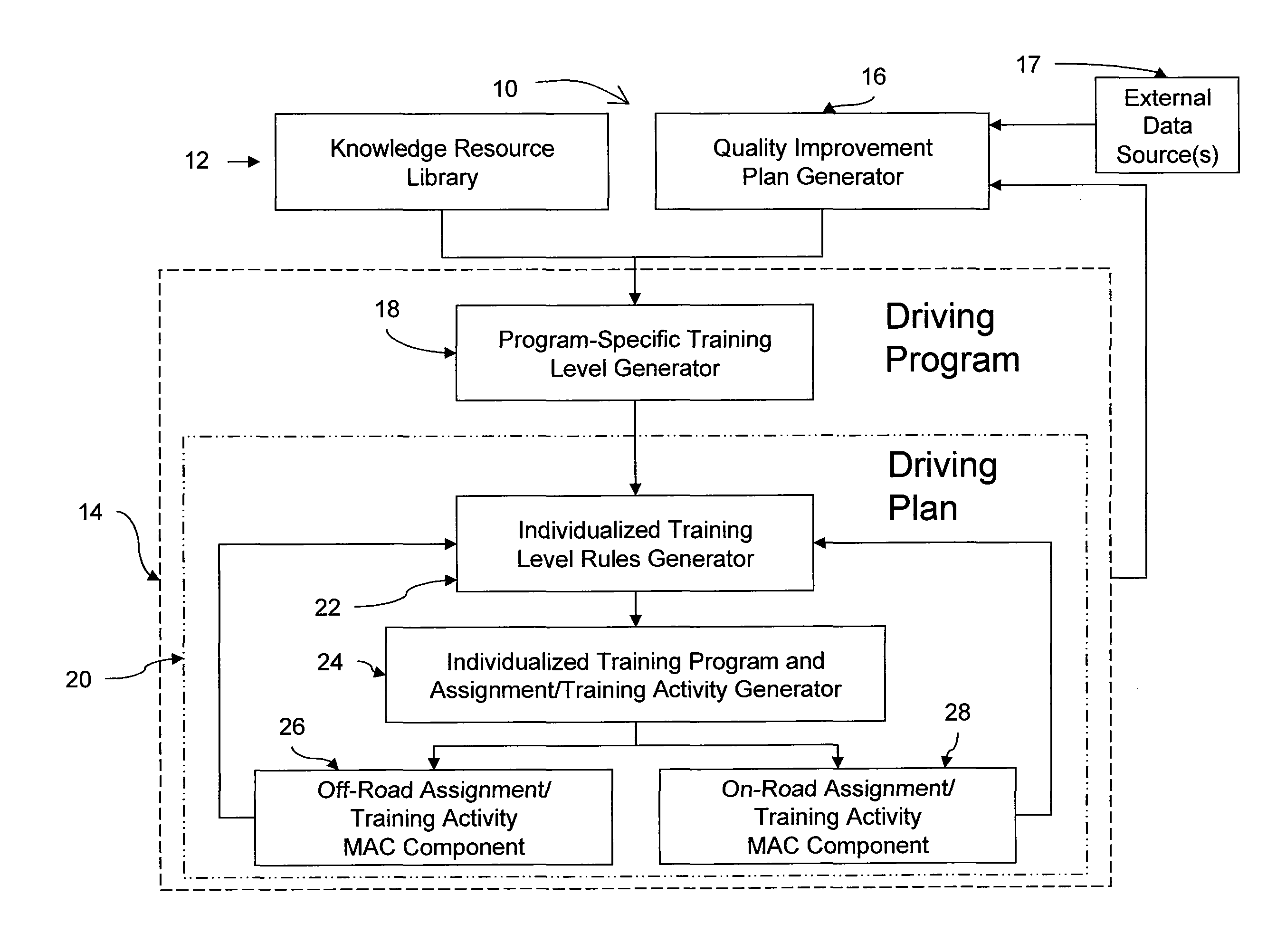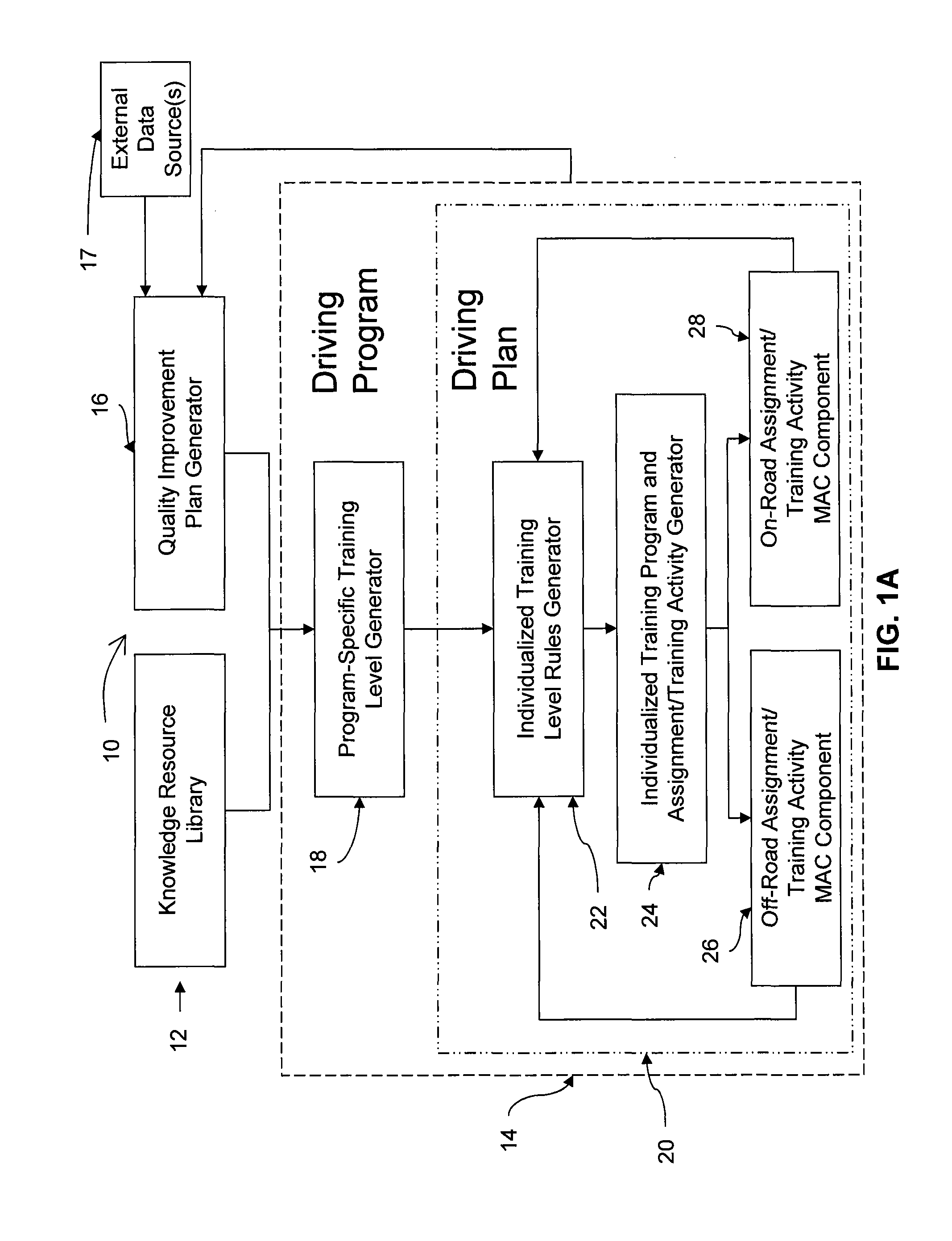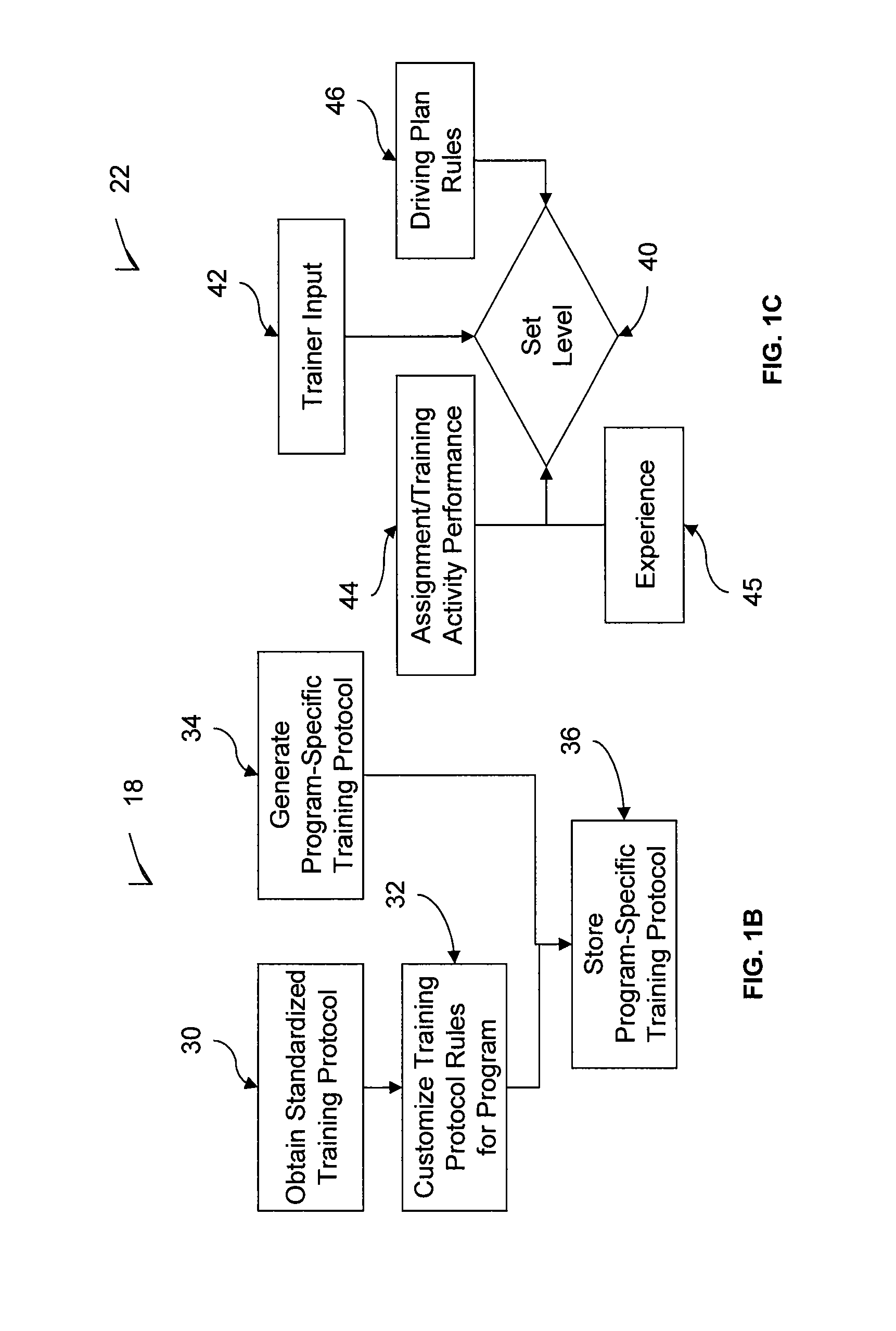Individualized mastery-based driver training
- Summary
- Abstract
- Description
- Claims
- Application Information
AI Technical Summary
Benefits of technology
Problems solved by technology
Method used
Image
Examples
Embodiment Construction
[0025]As a general overview, exemplary aspects of the invention may be embodied in adaptable, integrated, network-enabled (e.g., the Internet / web) knowledge management and quality improvement systems for structuring personalized, step-wise, performance-based driver training in order to achieve driving skill mastery and improved safety. Driver training in accordance with aspects of the present invention proceeds through a series of standardized achievement / mastery levels, each with progressive demands, challenges, and complexity. As used herein the term mastery level refers to levels much like those used in other forms of education that differentiate beginners from those who are more advanced and provide education and training content appropriate for the student or trainee's ability. A mastery level may be set based on performance and, optionally, experience. For example, expectations for performance of maneuvers and the provision of training (such as for right turns) by brand new le...
PUM
 Login to View More
Login to View More Abstract
Description
Claims
Application Information
 Login to View More
Login to View More - R&D
- Intellectual Property
- Life Sciences
- Materials
- Tech Scout
- Unparalleled Data Quality
- Higher Quality Content
- 60% Fewer Hallucinations
Browse by: Latest US Patents, China's latest patents, Technical Efficacy Thesaurus, Application Domain, Technology Topic, Popular Technical Reports.
© 2025 PatSnap. All rights reserved.Legal|Privacy policy|Modern Slavery Act Transparency Statement|Sitemap|About US| Contact US: help@patsnap.com



